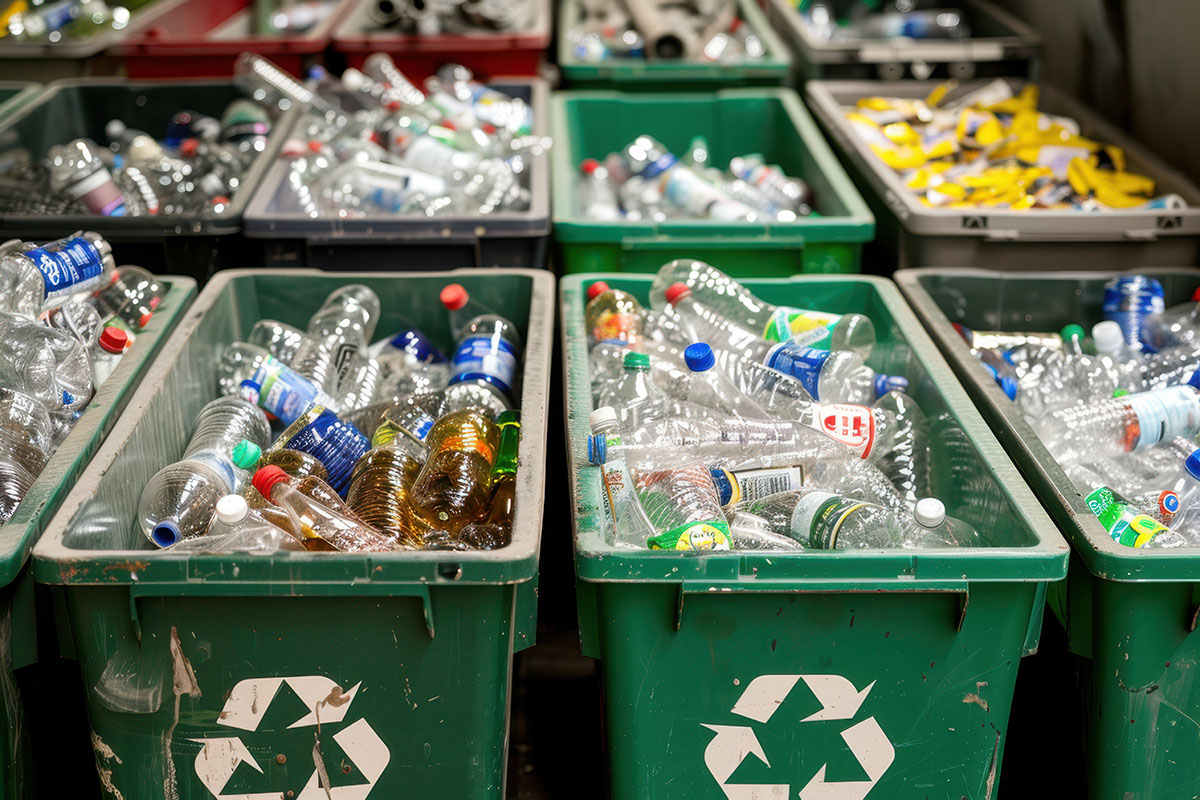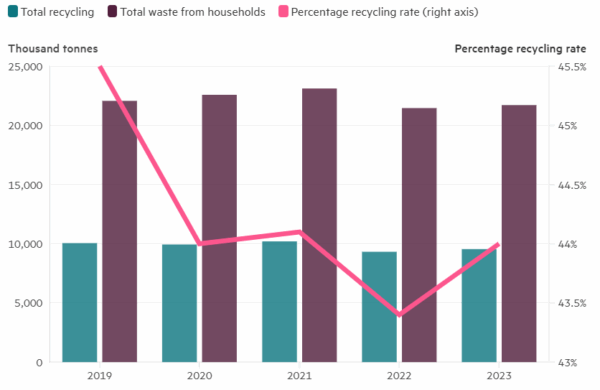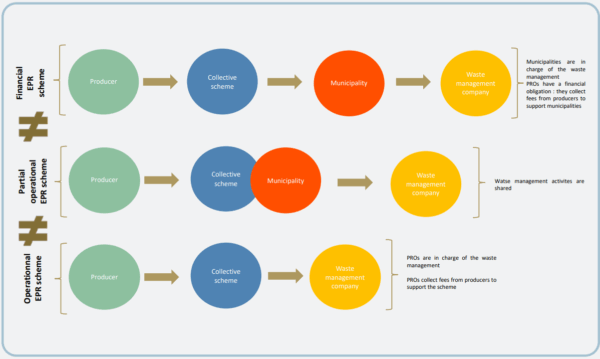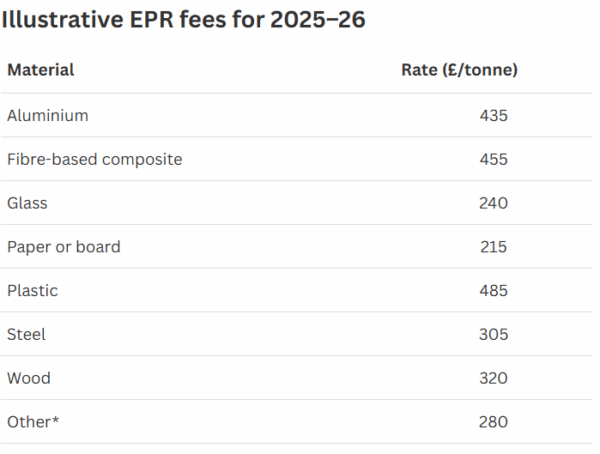Understanding Packaging EPR in the UK

The UK’s Extended Producer Responsibility scheme reshapes packaging design and recycling. Businesses now face new rules, fees, and sustainability standards.
Plastic waste is a growing problem. In the UK, households throw away around 60 pieces of plastic packaging weekly, but only 44% gets recycled. Progress has stalled, while waste piles up in landfills and oceans.
You can also read: Understanding Extended Producer Responsibility (EPR).
The UK is introducing the Packaging Extended Producer Responsibility (PEPR) scheme to address this. It shifts the cost of packaging waste from local councils to the companies that produce it. Now, businesses must pay to collect, sort, and recycle their packaging.
This shift goes beyond collection. Packaging Extended Producer Responsibility (PEPR) is changing how packaging is designed, used, and managed. The policy could drive a more circular, sustainable industry by linking environmental impact to cost.

Recycling rate of household waste in England. Courtesy of SustainableViews
What Is Extended Producer Responsibility (EPR)?
Extended Producer Responsibility is built on the “polluter pays” principle. Producers take responsibility for the entire lifecycle of their packaging. Instead of taxpayers footing the bill, businesses now fund waste collection and recycling.
EPR isn’t new. It gained traction in Europe during the 1990s. Countries like Germany and Sweden adopted it to reduce landfill waste. The EU later made it a cornerstone of its waste strategy. The UK followed suit with its 2019 Resources and Waste Strategy, setting the stage for PEPR.

Differences between operational and financial EPR schemes. Courtesy of Fair Resource Foundation.
The Role of PackUK in The PEPR
PackUK is the Scheme Administrator for PEPR. Its job is to set producer fees based on packaging type and volume. It also collects payments and distributes funds to councils.
Dr. Margaret Bates, Managing Director of PackUK, notes, “Our goal is to build a fair, transparent system that delivers real environmental benefits.”
By managing these payments, PackUK ensures producers contribute fairly and consistently. This financial accountability also encourages more thoughtful packaging decisions.
You can also read: Understanding Extended Producer Responsibility (EPR).
Implementation Timeline
The UK is rolling out pEPR in phases. Data reporting began in October 2023, giving companies time to understand the system. Originally set for 2024, full implementation was delayed to October 2025.
As part of this phased approach, authorities will begin cost modulation in 2025 by linking fees to a material’s recyclability. They will then introduce full modulation in 2026. By phasing in these changes, they aim to give businesses enough time to prepare, plan effectively, and adopt the new system smoothly.
Who Pays and What They Owe
Under PEPR, obligations vary by business size:
- Large producers (over £2M turnover, 50+ tonnes/year): Must pay base and modulated fees, report data twice yearly, and purchase PRNs or PERNs.
- Small producers (£1-£2M turnover, 25-50 tonnes/year): Currently report data only.
- Importers and online marketplaces: Accountable for packaging ending up as UK waste.
- Retailers and own-branders: Must report packaging sold under their brand, even if sourced externally.

EPR fees for 2025- 2026 in the UK. Courtesy of SustainableViews.
Economic Impact and Business Concerns
EPR is set to drive significant financial changes across the industry. Defra projects £10 billion in investment over ten years and expects around 21,000 new jobs in recycling and waste management.
However, these gains come with growing concerns over costs. For instance, Marks & Spencer estimate an annual impact of £40 million, as reported by the Retail Gazette. Similarly, the British Retail Consortium has warned that the added financial burden may lead to higher prices for consumers.
In addition to cost concerns, there is ongoing debate around how the collected funds will be used. While some stakeholders advocate for ring-fencing the money exclusively for recycling infrastructure, others worry it might be absorbed into broader local authority budgets.
This lack of clarity adds to the uncertainty, making it difficult for businesses to plan effectively. It also highlights the urgent need for consistent, transparent policies to support long-term investment and industry confidence.
Driving Innovation Through Design
EPR is pushing businesses to rethink packaging design. Many are now exploring paper-based, compostable, mono-material, and refillable options. At the same time, smart packaging is gaining traction. QR codes and RFID tags help improve tracking and customer experience.
Designers play a vital role in this shift. They influence how packaging performs during and after use.
Sophie Thomas, a sustainable design expert, says packaging must be designed with its end-of-life in mind. This means choosing formats and materials that are easy to recycle, reuse, or safely break down. As a result, innovation goes beyond regulation. It becomes an opportunity to build better systems and support a circular economy.
Read also: Unlocking Business Potential in the Plastic Recycling Market by 2030
EPR’s Impact Depends on What Happens Next
EPR changes who pays for packaging waste and how packaging is made. The shift aims to drive sustainability and reduce the burden on local authorities.
But the system is complex. Businesses need clarity on costs, timelines, and outcomes. There’s also concern over how fees are spent and whether new costs will reach consumers.
Still, the scheme offers a real chance to rethink packaging. If managed well, it could lead to better design, stronger infrastructure, and a greener industry.
Future success will depend on transparency, collaboration, and smart policy tweaks. With the right steps, EPR can move the UK closer to a circular packaging economy.
